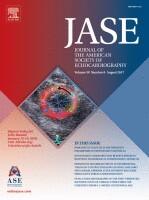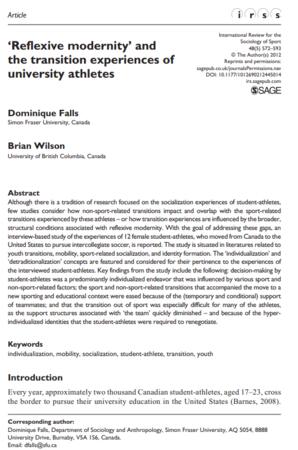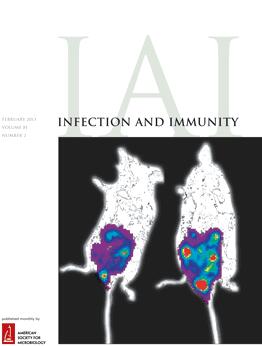Science and Technology
Related Works
Content type
Digital Document
Abstract
Mammalian acetyl-CoA carboxylase (ACC) isoforms, ACC-1 and ACC-2, catalyze the formation of malonyl-CoA, a substrate for fatty acid synthesis and fatty acyl chain elongation, and a potent inhibitor of beta-oxidation. Based on the phenotype of knockout mice, ACC contributes significantly to overall body energy metabolism and is a potential drug target for the treatment of obesity and type II diabetes. Highly-purified ACC-1 undergoes a dramatic increase in mass following treatment with allosteric activators such as citrate, apparently due to linear polymerization of ACC dimers. The current studies were undertaken to explore (a) the extent to which ACC-2 undergoes polymerization and (b) to investigate whether other cellular proteins associate with and perhaps regulate the polymerization process. Size exclusion chromatography and sucrose gradient sedimentation studies show that ACC-2 undergoes very modest changes in molecular size upon allosteric activation, although the extent of polymerization of ACC-2 is enhanced in the presence of ACC-1. Isolation of the largest molecular forms of ACC, followed by mass spectrometry analysis, reveals that ACC "polymers" are multi-protein complexes. The proteins most reliably detected in ACC polymer fractions include tubulin, actin, fatty acid synthase, and heat shock proteins. The significance of the additional components of ACC complexes is evaluated from effects on the kinetics of the ACC reaction and of the polymerization process, as well as by cellular colocalization using fluorescence microscopy and co-immunoprecipitation studies. [ABSTRACT FROM AUTHOR]
Origin Information
Content type
Digital Document
Abstract
This study considered how physical education teacher education students "perform" their "selves" within subject department offices during the practicum or "teaching practice". The research was framed by a conceptual framework informed by the work of Goffman on "performance" and "front". The findings revealed three common performances across the whole group across all sites. These were: performance of sports talk, bodily performances, and performance of masculine repertoires. Such performances were considered to be inconsistent with the coursework ideals and principles within the teacher education programme but in step with the general ethos of most PE department offices.
Origin Information
Content type
Digital Document
Abstract
Implementing an effective mental skills training program can be a daunting task. Often coaches do not have the luxury of hiring a sport psychologist or mental trainer to develop and implement their program. Coaches considering developing their own program are often plagued by questions like: How do I convince athletes that mental training is worthwhile? What elements do I include in the program? How do I encourage and support athletes as they develop their mental skills? This paper attempts to address these questions and to offer coaches some practical strategies and ideas for implementing an effective mental skills training program.
Origin Information
Content type
Digital Document
Abstract
Many coaches develop their skills and expertise through their experiences and by watching other coaches. However, simply acquiring experiences does not guarantee coaching competence. It is the integration of experience and knowledge in a meaningful way that promotes learning and in turn develops expertise. Coaches need to know how to best learn through their experiences. Reflective practice is a major learning tool in this regard.
Origin Information
Content type
Digital Document
Abstract
Background
Stress echocardiography has been advocated for the detection of abnormal myocardial function and unmasking diminished myocardial reserve in pediatric patients. The aim of this study was to create a simplified index of myocardial reserve, derived from the myocardial inotropic response to peak semisupine exercise in healthy children, and illustrate its applicability in a sample of pediatric oncology patients.
Methods
In this prospective analysis, children (7–18 years of age) with normal cardiac structure and function performed semisupine stress echocardiography to volitional fatigue. The quotient of wall stress at peak systole and heart rate–corrected velocity of circumferential fiber shortening were calculated at baseline and at peak exercise, the difference of which was termed the index of myocardial reserve (IMR). The IMR was also calculated in a retrospective sample of pediatric oncology patients with normal resting left ventricular function who had received anthracycline treatment and had performed the same exercise protocol to illustrate utility.
Results
Fifty healthy subjects (mean age, 13.2 ± 2.6 years) and 33 oncology patients (mean age, 12.7 ± 4.0 years) were assessed. In the healthy children at peak exercise, heart rate–corrected velocity of circumferential fiber shortening significantly increased (from 1.17 ± 0.17 to 1.58 ± 0.24 circ · sec−1, P < .001), while the quotient of wall stress at peak systole significantly decreased (from 75.3 ± 17.1 to 55.3 ± 13.8 g · cm−2, P < .001), shifting the plot of the relationship between the two parameters upward and to the left. The mean IMR was −30.8 ± 17.8, and the normal distribution ranged from −4.7 (fifth percentile) to −67.3 (95th percentile). The IMR was abnormal in 10 oncology patients who were treated with anthracyclines.
Conclusions
The authors have developed a novel IMR. Relative to the normal distribution of this IMR in healthy subjects, it is possible to identify patients with abnormal myocardial reserve. Thus, this study demonstrates the application of the IMR to aid in clinical decision making in individual patients.
Origin Information
Content type
Digital Document
Abstract
Background: Exercise testing in children is widely recommended for a number of clinical and prescriptive reasons. Many institutions continue to use the Bruce protocol for treadmill testing; however, with its incremental changes in speed and grade, it has challenges for practical application in children. We have developed a novel institutional protocol (British Columbia Children's Hospital (BCCH)), which may have better utility in paediatric populations.
Aim: To determine if our institutional protocol yields similar peak responses in minute ventilation (VE), oxygen consumption (VO 2 ), carbon dioxide production (VCO 2 ), respiratory exchange ratio (RER), metabolic equivalents (METS) and heart rate (HR) when compared with the traditional Bruce protocol.
Methods: On two different occasions, 70 children (boys=33; girls=37) aged 10-18 years completed an exercise test on a treadmill using each of the protocols. During each test, metabolic gas exchange parameters were measured. HR was monitored continuously during exercise using an HR monitor.
Results: Physiological variables were similar between the two protocols (median (IQR); r s ): VE (L/min) (BCCH=96.7 (72.0-110.2); Bruce=99.2 (75.6-120.0); r s =0.95), peak VO 2 (mL/min) (BCCH=2897 (2342-3807); Bruce=2901 (2427-3654); r s =0.94) and METS (BCCH=16.2 (14.8-17.7); Bruce=16.4 (14.7-17.9); r s =0.89). RERs were similar (BCCH=1.00 (0.96-1.02); Bruce=1.03 (0.99-1.07); r s =0.48). Total exercise time (in seconds) was longer for the BCCH protocol: BCCH=915 (829-1005); Bruce=810 (750-919); r s =0.67.
Conclusion: The BCCH protocol produces similar peak exercise responses to the Bruce protocol and provides an alternative for clinical exercise testing in children.
Origin Information
Content type
Digital Document
Abstract
Although there is a tradition of research focused on the socialization experiences of student-athletes, few studies consider how non-sport-related transitions impact and overlap with the sport-related transitions experienced by these athletes – or how transition experiences are influenced by the broader, structural conditions associated with reflexive modernity. With the goal of addressing these gaps, an interview-based study of the experiences of 12 female student-athletes, who moved from Canada to the United States to pursue intercollegiate soccer, is reported. The study is situated in literatures related to youth transitions, mobility, sport-related socialization, and identity formation. The ‘individualization’ and ‘detraditionalization’ concepts are featured and considered for their pertinence to the experiences of the interviewed student-athletes. Key findings from the study include the following: decision-making by student-athletes was a predominantly individualized endeavor that was influenced by various sport and non-sport-related factors; the sport and non-sport-related transitions that accompanied the move to a new sporting and educational context were eased because of the (temporary and conditional) support of teammates; and that the transition out of sport was especially difficult for many of the athletes, as the support structures associated with ‘the team’ quickly diminished – and because of the hyper- individualized identities that the student-athletes were required to renegotiate.
Origin Information
Content type
Digital Document
Abstract
Chlamydia trachomatis is the most important infectious cause of infertility in women with important implications in public health and for which a vaccine is urgently needed. Recent immunoproteomic vaccine studies found that four polymorphic membrane proteins (PmpE, PmpF, PmpG and PmpH) are immunodominant, recognized by various MHC class II haplotypes and protective in mouse models. In the present study, we aimed to evaluate genetic and protein features of Pmps (focusing on the N-terminal 600 amino acids where MHC class II epitopes were mapped) in order to understand antigen variation that may emerge following vaccine induced immune selection. We used several bioinformatics platforms to study: i) Pmps’ phylogeny and genetic polymorphism; ii) the location and distribution of protein features (GGA(I, L)/FxxN motifs and cysteine residues) that may impact pathogen-host interactions and protein conformation; and iii) the existence of phase variation mechanisms that may impact Pmps’ expression. We used a well-characterized collection of 53 fully-sequenced strains that represent the C. trachomatis serovars associated with the three disease groups: ocular (N=8), epithelial-genital (N=25) and lymphogranuloma venereum (LGV) (N=20). We observed that PmpF and PmpE are highly polymorphic between LGV and epithelial-genital strains, and also within populations of the latter. We also found heterogeneous representation among strains for GGA(I, L)/FxxN motifs and cysteine residues, suggesting possible alterations in adhesion properties, tissue specificity and immunogenicity. PmpG and, to a lesser extent, PmpH revealed low polymorphism and high conservation of protein features among the genital strains (including the LGV group). Uniquely among the four Pmps, pmpG has regulatory sequences suggestive of phase variation. In aggregate, the results suggest that PmpG may be the lead vaccine candidate because of sequence conservation but may need to be paired with another protective antigen (like PmpH) in order to prevent immune selection of phase variants.
Origin Information
Content type
Digital Document
Abstract
We assessed HPV 16 and 18 antibody responses of female subjects enrolled in a 2- vs. 3-dose quadrivalent HPV (Q-HPV) vaccine trial (ClinicalTrials.gov NCT00501137) using the Merck competitive Luminex (cLIA) and total IgG Luminex (TIgG) immunoassays, and a pseudovirus neutralizing antibody (PsV NAb) assay. Subjects were enrolled in one of three groups: (1) 9–13 yr, 2 doses of Q-HPV at 0, 6 months (n = 259); (2) 9–13 yr, 3 doses at 0, 2, 6 months (n = 260); and (3) 16–26 yr, 3 doses at 0, 2, 6 months (n = 305). Sera were collected from all subjects at baseline, months 7 and 24, and from half the subjects at months 18 and 36. High correlation was observed between all three assays. At month 36, HPV 16 antibodies remained detectable in all subjects by all assays, whereas 86.4%, 99.6% and 100% of subjects respectively were HPV 18 cLIA, TIgG and PsV NAb (partial neutralization endpoint) seropositive. The proportion seropositive for HPV 18 by cLIA at 36 months was not significantly different for 2-dose girls vs. 3-dose adults (85.9% vs. 79.4%; p = 0.51), whereas the proportion for 3-dose girls was significantly higher than for 3-dose adults (95.3% vs. 79.4%; p < 0.01). The HPV 18 seropositive proportions by the TIgG and PsV NAb (partial neutralization endpoint) assays were the same for all subjects. High baseline HPV 16 and HPV 18 seropositivity was observed for the TIgG assay and it is unclear if all the detected TIgG antibodies are type-specific and/or neutralizing. For the PsV NAb assay, 90% and partial neutralization geometric mean titres were consistently 2–8-fold higher than for 100% neutralization, which enabled detection of HPV 18 NAb in subjects who lost detectable cLIA antibodies over time. We conclude that the PsV NAb assay is more sensitive than the cLIA, and likely more specific than the TIgG assay.
Origin Information
Content type
Digital Document
Abstract
Surveillance and defense of the enormous mucosal interface with the nonsterile world are critical to protecting the host from a wide range of pathogens. Chlamydia trachomatis is an intracellular bacterial pathogen that replicates almost exclusively in the epithelium of the reproductive tract. The fallopian tubes and vagina are poorly suited to surveillance and defense, with limited immune infrastructure positioned near the epithelium. However, a dynamic process during clearing primary infections leaves behind new lymphoid clusters immediately beneath the epithelium. These memory lymphocyte clusters (MLCs) harboring tissue-resident memory (Trm) T cells are presumed to play an important role in protection from subsequent infections. Histologically, human Chlamydia MLCs have prominent B cell populations. We investigated the status of genital tract B cells during C. muridarum infections and the nature of T cells recovered from immune mice using immune B cells as antigen-presenting cells (APCs). These studies revealed a genital tract plasma B cell population and a novel genital tract CD4 T cell subset producing both gamma interferon (IFN-γ) and interleukin-13 (IL-13). A panel of CD4 T cell clones and microarray analysis showed that the molecular fingerprint of CD4γ13 T cells includes a Trm-like transcriptome. Adoptive transfer of a Chlamydia-specific CD4γ13 T cell clone completely prevented oviduct immunopathology without accelerating bacterial clearance. Existence of a CD4γ13 T cell subset provides a plausible explanation for the observation that human peripheral blood mononuclear cell (PBMC) Chlamydia-specific IFN-γ and IL-13 responses predict resistance to reinfection.
Origin Information










